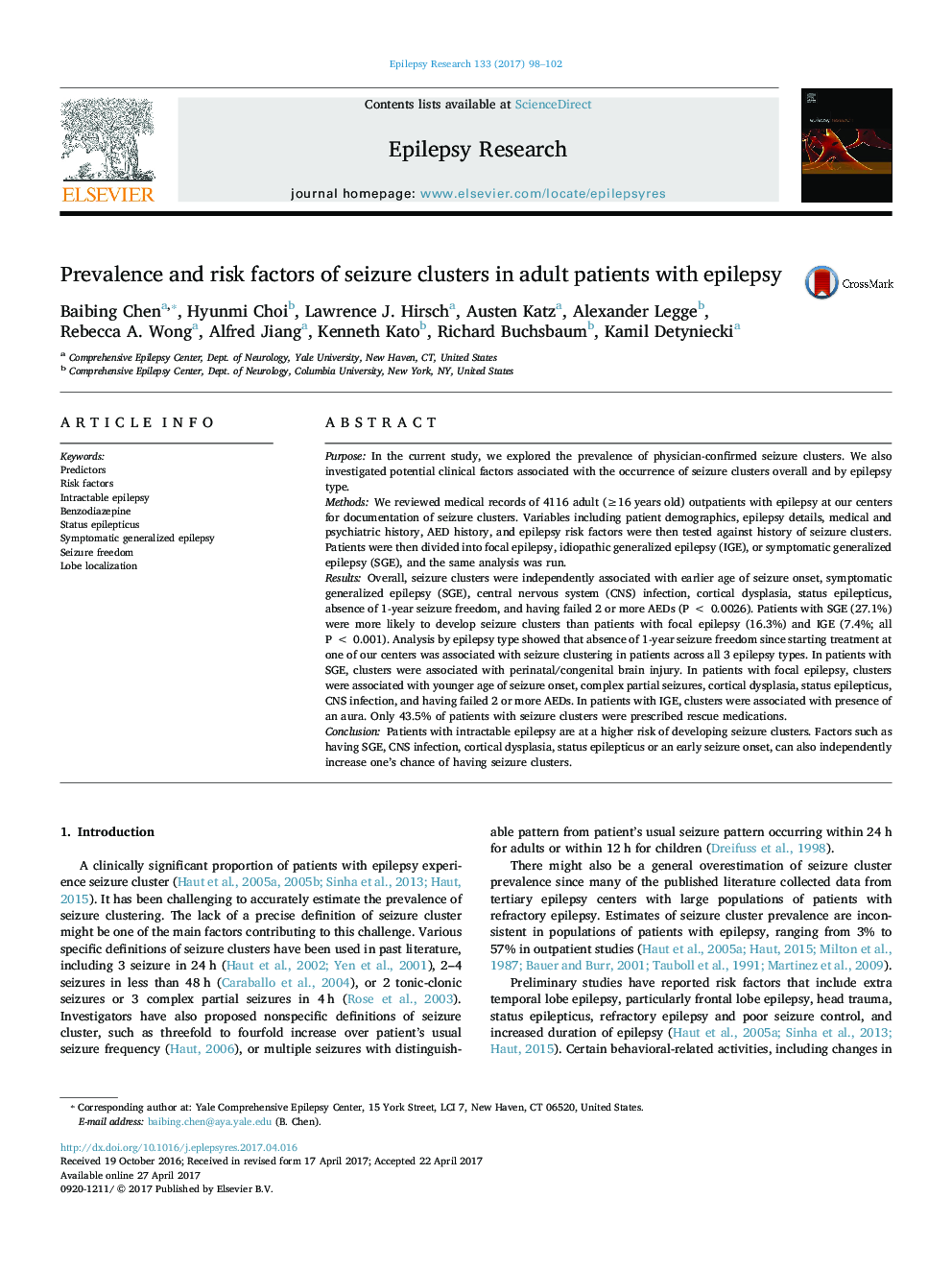| کد مقاله | کد نشریه | سال انتشار | مقاله انگلیسی | نسخه تمام متن |
|---|---|---|---|---|
| 5628589 | 1579890 | 2017 | 5 صفحه PDF | دانلود رایگان |
- Earlier age of seizure onset, symptomatic generalized epilepsy (SGE), and status epilepticus were associated with seizure clustering.
- Absence of 1-year seizure freedom, and having failed 2 or more AEDs were also associated with seizure clustering.
- Seizure clustering was more likely in patients with SGE than in patients with focal epilepsy or idiopathic generalized epilepsy.
- 56.5% of patients that experienced seizure clusters at our centers did not have a rescue medication documented in their medical records.
- Increased awareness of seizure cluster risk factors and rescue medication use may lead to better care of patients with seizure clusters.
PurposeIn the current study, we explored the prevalence of physician-confirmed seizure clusters. We also investigated potential clinical factors associated with the occurrence of seizure clusters overall and by epilepsy type.MethodsWe reviewed medical records of 4116 adult (â¥16 years old) outpatients with epilepsy at our centers for documentation of seizure clusters. Variables including patient demographics, epilepsy details, medical and psychiatric history, AED history, and epilepsy risk factors were then tested against history of seizure clusters. Patients were then divided into focal epilepsy, idiopathic generalized epilepsy (IGE), or symptomatic generalized epilepsy (SGE), and the same analysis was run.ResultsOverall, seizure clusters were independently associated with earlier age of seizure onset, symptomatic generalized epilepsy (SGE), central nervous system (CNS) infection, cortical dysplasia, status epilepticus, absence of 1-year seizure freedom, and having failed 2 or more AEDs (P < 0.0026). Patients with SGE (27.1%) were more likely to develop seizure clusters than patients with focal epilepsy (16.3%) and IGE (7.4%; all P < 0.001). Analysis by epilepsy type showed that absence of 1-year seizure freedom since starting treatment at one of our centers was associated with seizure clustering in patients across all 3 epilepsy types. In patients with SGE, clusters were associated with perinatal/congenital brain injury. In patients with focal epilepsy, clusters were associated with younger age of seizure onset, complex partial seizures, cortical dysplasia, status epilepticus, CNS infection, and having failed 2 or more AEDs. In patients with IGE, clusters were associated with presence of an aura. Only 43.5% of patients with seizure clusters were prescribed rescue medications.ConclusionPatients with intractable epilepsy are at a higher risk of developing seizure clusters. Factors such as having SGE, CNS infection, cortical dysplasia, status epilepticus or an early seizure onset, can also independently increase one's chance of having seizure clusters.
Journal: Epilepsy Research - Volume 133, July 2017, Pages 98-102
